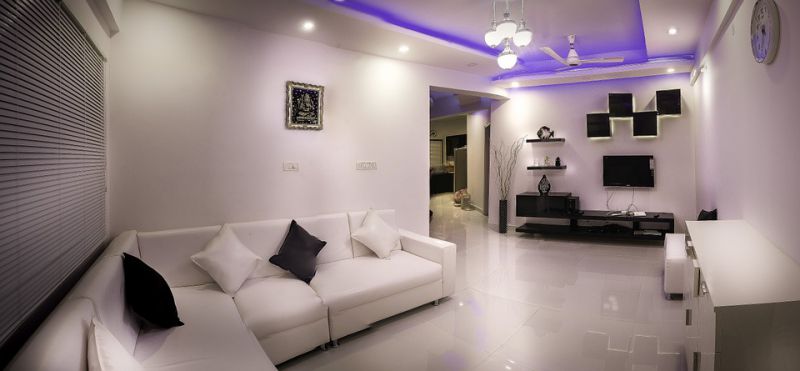Building a home is a long-term ambition for a lot of people. If you want to construct an independent house or simply learn how building happens, understanding the process step by step can guide you in making decisions.
It explains 48 phases for building a house in India, from the initial planning to the final finishing details.
Anyone who deals with home construction in India, from homeowners and contractors to architects, will find this guide helpful.
The Importance of Being Aware of How a House is Built
Following the entire home construction guide reduces your chances of facing delays, going over budget or making errors in design. Also, it makes it easier to organize schedules properly, hire the right people and inspect their work for quality.
Pre-Construction Stage (Planning & Design)
When you buy land or a plot, consider a place that features easy access to roads, plentiful water and nearby utilities.
- Find the strength of the soil beneath the building and its type to select the best foundation design.
- Prepare a Design Plan – Have architects and engineers help prepare a plan for your home that will be safe and cost-effective according to Vastu principles.
- Use a house construction calculator or turn to professional consultants for estimating cost.
- Get Approvals – Architectural plans required, submit them and secure building permissions.
- Loan & Insurance – Organize home loans and buy insurance for your property while it’s being built.
- Pick a Contractor – Carefully look for and choose a trustworthy contractor.
- Remove any garbage and rocks, level the area and secure it by putting up a fence.
Foundation & Substructure Stage
- Make sure to place markers according to the layout drawn on the construction drawings.
- Make excavations for isolated or combined footings.
- Choose a good treatment option and treat your foundation to keep pests out.
- PCC Work – Pour cement concrete beneath the footings that support the foundation.
- Place rebars exactly where they are called for in the design.
- Footing Concreting – Complete the base of the foundation by pouring concrete.
- From the footing level, cast each column up to the plinth, using a cast starter column.
- Install both steel and shuttering for plinth beams in the proper places.
- Workers pour concrete into the substructure beam to bind everything together.
- Cover the walls and the plinth with the soil you removed during the foundation digging process.
- Soil is compacted and the necessary PCC poured under the slab in the ground.
- As specified, add a layer of brick or stone soling for the flooring base.
Superstructure Construction
- Connect the base of the columns to the lowest level of the slab.
- Shuttering & Reinforcement for Slab – Arrange formworks and then put steel inside them.
- Build the slab and staircase by pouring reinforced concrete.
- Water curing the mixture will help make the concrete stronger and free from cracks.
- Brick or block construction should start and stop at the level of the lintel.
- To do this, cast lintels made of concrete over your door and window frames.
- Lay the brick walls high enough to end at the ridge of the roof.
- Set up a short wall along the edge of the terrace for your own safety.
Roofing & Waterproofing
- Waterproofing the Roof – Cover the roof with a membrane or liquid waterproofing after doing pond testing.
- Add a protective layer of concrete screed to the top of the roof.
MEP (Mechanical, Electrical, Plumbing) Works
- Lay water supply and drainage pipes using the plumbing line.
- Installing Electrical Conduit – Feed wiring into conduits in the wall.
- For MEP, you should groove masonry material to fit the service lines.
- Water Tanks should be fixed by making Underground and Overhead tanks.
- Pump Installation – Install both submersible and booster pumps in the supply or drainage systems.
- The main purpose of Manholes & Gully Traps is to direct sewage that comes from the outside to the system of pipes.
Doors, Windows & Plastering
- Attach Door & Window Frames – Stably put frames in place before plastering the wall.
- Internal & External Plastering – Create a polished finish on plaster surfaces.
- Put waterproofing in areas such as bathroom floors, where water might get under the tiles.
Finishing Works
- Cover the floor with marble, tiles or granite.
- Installation of the Kitchen Platform – Put up the kitchen counters and sinks.
- Fix faucets, taps, wash basins and toilets using CP & Sanitary Fittings.
- Hang or attach the doors and window shutters on your ranch home.
- Fix all fittings such as switches, lights, fans and sockets.
- To make your home more attractive, add a decorative false ceiling and cornice.
- Exterior & Interior Painting – Use primer followed by several coats of paint.
- AC & Geyser Fittings – Secure air conditioners and water heaters with these fittings.
- Clean and prepare the premises, while preparing for your housewarming ceremony.
Things to Keep in Mind to Avoid Errors in House Construction
- Ignoring soil testing
- Hiring unqualified contractors
- Inadequate supervision
- Skipping waterproofing
- Budgeting without contingency
Also read related articles:
FAQs on House Construction
Q1: What is the usual timeframe for building a house in India?
Generally, the time required is 9 to 18 months depending on how much the building is expected to cost and the type of design.
Q2: In India, how much does it normally cost to construct one square foot of a house?
The cost is estimated at between ₹1,500 and ₹2,500 per square foot for labor and building materials.
Q3: Is it possible to construct a house by myself, without the help of architects or engineers?
Not recommended. Professionals help ensure that expensive mistakes in design and structure are avoided.
Q4: What season is most suitable for beginning a house construction project?
The months of October to February are the best time for travel, since the weather is dry and there are no obstacles.
Conclusion:
The above steps 48 steps for house construction in India are involved and we need to keep in mind to avoid errors in house construction which can impact the overall budget and quality issues later.
Links to other related posts :




Thank you for writing this post!
Nice post. I was checking continuously this blog and I’m impressed! Very useful info specifically the last part 🙂 I care for such information a lot. I was seeking this particular information for a very long time. Thank you and good luck.
Re Engineering is also required for the field people for easly understanding of the subject
Point of you like case studies for the daily burning issues of construction works.
Thanks a lot for giving everyone a very remarkable chance to read articles and blog posts from here. It really is so lovely and packed with a great time for me personally and my office mates to search the blog really thrice every week to find out the newest stuff you have got. And definitely, we’re certainly astounded with your great tactics served by you. Selected 4 areas in this article are unequivocally the most effective I’ve had.
Very good information for new engineer s&construction field people, please provide simple caluclations of budjet plannes&cost estimations.